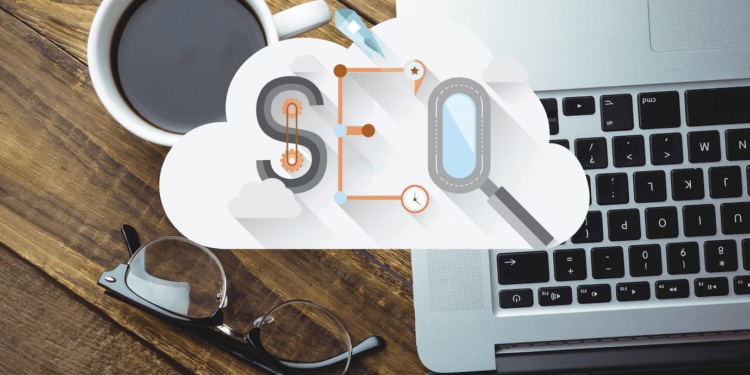WordPress is one of the most popular Content Management Systems (CMS) today, and it’s no surprise why – it’s easy to use, customizable, and constantly improving. However, having a WordPress website alone won’t get you the organic traffic you want. With millions of websites on the internet, how can you ensure your website is visible to your target audience? This is where SEO for WordPress comes in, and the good news is you don’t have to be an expert to implement these best practices.
SEO for WordPress isn’t just about optimizing your website for search engine algorithms; it’s also about enhancing the user experience. The better your website performs in speed, usability, and content quality, the more likely your website is to rank higher on search engine results pages (SERPs). In addition, by optimizing your website, you’ll also be improving your website’s visibility on social media, an increasingly important aspect of online marketing.
In this blog post, we’ll discuss the eight best practices for optimizing your WordPress website for SEO.
1. Using SEO Friendly URL Structures in WordPress
SEO friendly URL is a URL that contains words that clearly explain the content of the page. It’s easy to read by both humans and search engines. SEO friendly URLs are relevant to the page’s content, and they give users an idea of what they will find on the page just by looking at the URL text.
Here are some examples of SEO friendly URLs:
https://www.example.com/how-to-install-wordpress/
https://www.example.com/common-wordpress-errors-and-how-to-fix-them/
As you can see, these URLs are readable and user-friendly. A user can easily guess what they see on the page by looking at the URL text. This makes it easy for both users and search engines to understand what your page is about.
On the other hand, non-SEO friendly URLs look something like this:
https://www.example.com/?p=10467
http://example.com/archives/123
Notice that these URLs use numbers unrelated to the content; a user cannot guess what they will find on the page by looking at the URL. This makes it difficult for search engines to understand what your page is about, which can hurt your ranking. Hire the best SEO konsulent for improving your website ranking on SERPs.
2. Properly Using Categories and Tags in WordPress
One of the most important features of WordPress is the ability to sort your blog posts into categories and tags.
Categories are used to group your blog posts into broad topics or themes. Think of categories as a table of contents for your blog. They help you organize your content, making it easy for your readers to find what they want. Categories are hierarchical, meaning you can create sub-categories within a main category.
Tags are used to describe the specific content of an individual blog post. They are more specific than categories and help readers find content related to their interests. Tags are like the index of a book, providing readers with a quick way to find specific topics.
Categories and tags can also help improve your website’s search engine optimization (SEO). By properly categorizing and tagging your posts, you provide search engines with important information about your content. This makes it easier for search engines to understand the structure and content of your website.
When creating categories and tags, it’s important to use relevant keywords that describe your blog’s content. This will help search engines identify what your blog is about and improve your website’s ranking in search results.
3. Make Internal Linking a Habit
Internal linking is an essential and often overlooked aspect of search engine optimization (SEO). It is the practice of linking to your content from other website pages. By doing this, you tell search engines that your pages are related and valuable, which can ultimately help improve your rankings. But internal linking isn’t just important for SEO. It also helps to improve the user experience on your website. By linking to related content, you’re providing visitors with more information and resources to help them better understand your topic or product. This can increase engagement, longer sessions, and a better overall user experience.
So how do you make internal linking a habit? The first step is to ensure you’re creating high-quality content relevant and valuable to your audience. This will give you a solid foundation to work with when it comes to internal linking.
To make internal linking even easier, you can also use tools like the WordPress Link Assistant feature from the All in One SEO plugin. This tool allows you to quickly and easily find relevant content to link to within your website, making internal linking as simple as possible.
4. Optimize Your Site’s Speed and Performance
In today’s fast-paced digital world, website speed and performance are crucial to the success of any online business or website. As mentioned earlier, users have an extremely short attention span, and slow loading times can cause them to abandon your website in favor of a faster one. Furthermore, search engines like Google prioritize faster websites in their search results, meaning that slow loading times can negatively impact your search engine rankings.
To optimize your website’s speed and performance, you must have a fast WordPress hosting provider. Two of the best options in the market are SiteGround and Bluehost. These hosting providers specialize in WordPress hosting and offer fast loading speeds, reliable uptime, and excellent customer support.
In addition to SEO, you can use several other strategies to optimize your website’s speed and performance. These include compressing images and other large files, minimizing HTTP requests, and using a content delivery network (CDN) to distribute your content across multiple servers.
Implementing these strategies ensures that your website loads quickly and provides an excellent user experience. Not only will this improve your search engine rankings, but it will also help you attract and retain loyal customers or readers.
5. Optimizing Images in WordPress for SEO
One of the most common mistakes website owners make is using too large images. Large images take more time to load, slowing down your website. This is especially important for mobile users using slower internet connections. To optimize your images, you should resize them to the appropriate size before uploading them to your website.
WordPress has a built-in image editor that allows you to resize your images. When you upload an image, WordPress automatically creates several copies of that image in different sizes. You can choose the appropriate size for your needs, or even create custom sizes.
Another way to optimize your images for SEO is to compress them. Compressing your images reduces their file size without sacrificing quality. This makes them load faster, which improves your website’s overall performance.
When it comes to SEO, file names matter. A descriptive file name can help search engines understand what your image is about. This makes it easier for them to index your image and show it in search results.
Alt text and titles are HTML attributes that provide additional information about your images. Alt text is used to describe the contents of your image to search engines and users with visual impairments. Titles are used to provide additional information about your image.
6. Security and Safety of Your WordPress Site
The internet is a minefield of malware, phishing scams, and viruses, and a single security breach can lead to devastating consequences for your website and business. Google blacklists around 70,000 websites each week, with 20,000 of them being blacklisted for malware and another 50,000 for phishing. Being blacklisted by Google can result in your website being completely removed from all search results, causing significant damage to your online reputation and traffic.
This is why ensuring the security and safety of your WordPress site is essential. Not only does it help protect your website, but it also contributes to better SEO rankings. Search engines like Google prioritize secure websites over unsecured ones, making it crucial to keep your site safe from potential threats.
If you’re a WordPress user, you’re in luck, as it’s relatively easy to secure your site. Following simple steps can keep your site safe and secure from potential hackers and malicious attacks.
The first step is to install a WordPress security plugin. A security plugin is a software tool that helps secure your website by providing features such as malware scanning, firewall protection, and brute-force attack prevention. Some popular options include Wordfence, Sucuri, and iThemes Security.
7. Choose a host focused on WordPress
The web host you choose can make or break your website’s speed. Choosing a web host focused on providing you with the best performance for your WordPress site is essential. This means the host’s server infrastructure is optimized for WordPress, ensuring that your site runs quickly and efficiently.
So, why is a WordPress-focused host so important? Firstly, WordPress is a unique platform. It requires specific server configurations and software to run effectively. A host that specializes in WordPress will have the experience and expertise to provide the necessary infrastructure and support to ensure your site runs smoothly.
In addition, a WordPress-focused host will have optimized servers for WordPress, which can significantly improve your site’s speed. This means that your website will load faster, which can improve your search engine rankings and user experience.
8. Optimize your database
Using WordPress, your database accumulates data that can slow down your site. Entries like post revisions, spam comments, and deleted posts can pile up and take up valuable space in your database tables. This can lead to a slower user experience, making it more difficult for visitors to navigate your site.
Optimizing your database can help eliminate these unnecessary entries, making your database tables smaller and more efficient. This can help speed up your site and improve your users’ experience.
While you could manually optimize your database by deleting files and entries, it’s a time-consuming process. If you’re not careful, you could accidentally delete essential files or data. Instead, consider using a plugin like WP-Optimize.
WP-Optimize is a powerful plugin that offers various optimization features, including database optimization. With this plugin, you can optimize your database tables, remove unwanted files and entries, and even schedule automatic cleanups. This makes database optimization a breeze, and you can ensure that your database is always running smoothly.
In conclusion, having a WordPress website is the first step toward online success. Implementing SEO best practices is essential to increase your website’s visibility and reach your target audience. By optimizing your website for both search engines and user experience, you’ll not only improve your website’s ranking on SERPs but also enhance your online presence on social media. With these SEO tips, you can ensure that your WordPress website is effectively optimized and remains competitive in the digital landscape.



















